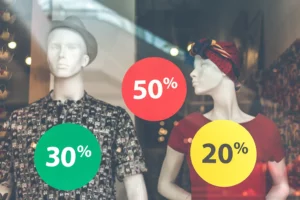A product’s price determines so much about the product and the goods: it determines who buys the product and how many will buy it. It also determines if the product will generate enough revenue to sustain its production of the product and enhance its reach. So, businesses take a lot of caution in determining the right prices for their product.
The goal is to find the right spot, the bull’s eye of the price ranges. Knowing that both extremes of too cheap and too expensive can ultimately shut down the business if not done right.
To do A/B test pricing for your online store, follow these five steps:
- Understand What A/B Test Pricing Involves.
- Find Out the Price Terminals You Would Want to Test.
- Use Different Products to Carry Out A/B Test Pricing.
- Use the Revenue Over Conversion Formula.
- Streamline and Repeat the Process.
Ready to learn more? Let’s go!
1. Understand What A/B Test Pricing Involves
What is A/B testing, and what does it involve? It is a critical question in performing A/B test pricing for your online store. A/B test pricing is a test to determine the price of your product. If you’ve been asking, should I sell my new products at what price? Then this test helps you arrive at an answer.
A/B test pricing requires you to split your audience into two groups or something close and present them with different samples of the same product. The objective is to see and observe which of the samples does better; the result determines which price is the best of options.
Pricing physical goods is a lot easier. You’d mostly have to sum up the cost of production and distribution, and then you top in your margin of a couple of percent or so. Online products are a little tougher to tag a price, and there is no cost in production.
The absence of cost of production alone can complicate things, and it becomes even worse when, sometimes, there is no reference product in the market, leaving room for only perception. Of course, you have the problem of making the price too little if you make the price too low.
You may sell a lot, but the accumulated profit won’t amount to much. On the other hand, if you charge too much, you will sell less and get more money but still not enough. One way of solving this problem is to engage in A/B test pricing.
2. Find Out the Price Terminals You Would Want to Test
To do A/B test pricing for your online store, find the price terminals you want to test. As a wise business person, gathering the information you need before launching out is necessary. Working out your price terminals will help streamline your choices for the A/B test pricing.
To find the price terminals for the test:
- Work more with perceived value and what your competitors charge.
- Check out your competitors’ sites for their products and get the price tag for them.
- Answer the question of what value you have put into your product. This matters because the value of a product is a major determinant of price. Beyond finding out what your competitors charge for their products, compare the value of the product.
Determining your pricing terminal isn’t a hassle if you can get these basics right.
3. Use Different Products to Carry Out A/B Test Pricing
One of the tricky sides of carrying out A/B test pricing for your online store is that you may create a sense of unfairness and partiality amongst your prospective customers.
Generally, it’s illegal to sell the same product at different prices. Doing so can attract severe legal action. To avoid such, use two different products.
For example, You may want to sell an online course with a predetermined $20 per month product price. You can put the same course out there but with added value/values and double or triple the price to #60 dollars monthly.
After this, observe your prospect’s responses to the two products and how much revenue each generates. From the results, calmly choose your pricing.
Of course, there is the option of putting out the same product with minor changes, just a few tweaks. It shields you from accusations of fraud. To be safer, stick to the first method of giving two different products.
4. Use the Revenue Over Conversion Formula
Most business people are tempted to determine the price for their products by comparing conversions instead of revenues. Tendencies are that the cheaper product may sell more than the expensive product, but the few products you sell could generate more revenue.
In the same way, the cheaper product tends to sell more and, if the price is set right, still generates the revenue you need. Whatever the case, pay attention to revenue generation, not the number of conversions per service.
5. Streamline and Repeat the Process
To effectively do A/B test pricing for your online store, streamline and repeat the process. It helps you get a more exact price to tag your products rather than a one-off test.
Repeat the process when you finish your first phase of A/B testing pricing by tightening the gap between the two price terminals. For example, if you tested for $40 against $100 and concluded that $40 is the best range, repeat the process with $40 against a lesser price.
Repeat these processes until you are convinced that your product is the best and will generate the highest revenue.
Conclusion
A/B test pricing has pros and cons but is still a very effective way of tagging a price to your product. Understand A/B Test Pricing Involves.
To do A/B test pricing for your online store, understand what A/B test pricing involves, find out the price terminals you want to test and use different products to carry out the A/B test pricing. More so, use the revenue over conversion formula, and streamline and repeat the process.














